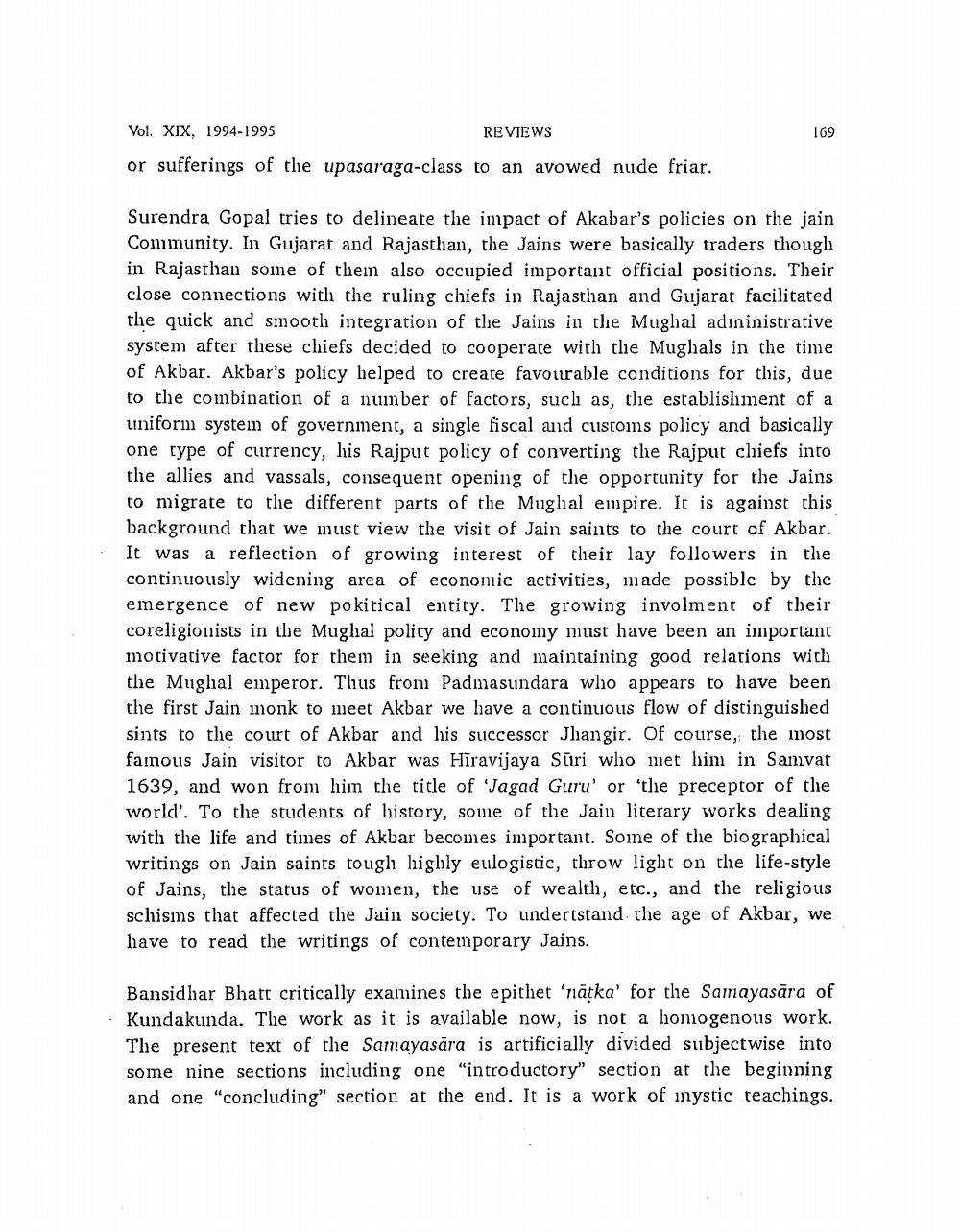________________
169
Vol. XIX, 1994-1995
REVIEWS or sufferings of the upasaraga-class to an avowed nude friar.
Surendra Gopal tries to delineate the impact of Akabar's policies on the jain Community. In Gujarat and Rajasthan, the Jains were basically traders though in Rajasthan some of them also occupied important official positions. Their close connections with the ruling chiefs in Rajasthan and Gujarat facilitated the quick and smooth integration of the Jains in the Mughal administrative system after these chiefs decided to cooperate with tlie Mughals in the time of Akbar. Akbar's policy helped to create favourable conditions for this, due to the combination of a number of factors, such as, tlie establishment of a uniform system of government, a single fiscal and customs policy and basically one type of currency, his Rajput policy of converting the Rajput chiefs into the allies and vassals, consequent opening of the opportunity for the Jains to migrate to the different parts of the Mughal empire. It is against this background that we must view the visit of Jain saints to the court of Akbar. It was a reflection of growing interest of their lay followers in the continuously widening area of economic activities, made possible by the emergence of new po kitical entity. The growing involment of their coreligionists in the Mughal polity and economy must have been an important motivative factor for them in seeking and maintaining good relations with the Muglial emperor. Thus from Padmasundara who appears to have been the first Jain monk to meet Akbar we have a continuous flow of distinguished sints to the court of Akbar and his successor Jhangir. Of course, the most famous Jain visitor to Akbar was Hīravijaya Sūri who met him in Samvat 1639, and won from hin the title of Tagad Guru' or 'the preceptor of the world'. To the students of history, some of the Jain literary works dealing with the life and times of Akbar becomes important. Some of the biographical writings on Jain saints tough higlily eulogistic, throw light on the life-style of Jains, the status of women, the use of wealth, etc., and the religious schisms that affected the Jain society. To undertstand the age of Akbar, we have to read the writings of contemporary Jains.
Bansidhar Bhatt critically examines the epithet 'nātka' for the Samayasāra of Kundakunda. The work as it is available now, is not a homogenous work. The present text of the Samayasāra is artificially divided subjectwise into some nine sections including one "introductory" section at the beginning and one "concluding" section at the end. It is a work of inystic teachings.




